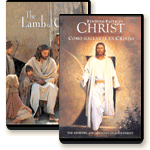Introduction:
The following pages contain a compilation of Easter Scriptures designed for reading aloud with family or friends during the weeks before and after Easter, as a way of focusing your Easter celebration on Christ. This compilation is largely based on Our Lord of the Gospels, the harmony of the gospels by J. Reuben Clark Jr. The harmony contained in A Christ Centered Easter by Janet and Joe Hales also had an influence on the final organization. I recognize that the differences in the accounts found in the various gospels cannot always be fully harmonized. I claim no expertise in scripture scholarship to justify the decisions about what was included. My experience is in theater, and I simply organized the scriptures to produce a reading script that made sense to me. This compilation of scriptures includes almost all the events from the last week of the Savior’s mortal life, His death and resurrection, that are recorded in the gospels (King James Version) and the Book of Mormon. Where an incident is recorded in more than one of the gospels, the most detailed account has been included, or details from several accounts have been included. Because the text moves back and forth between the various gospels, I suggest that, for continuity in reading aloud, you omit reading the citations and just focus on the text.
Hymns are included at appropriate places. The hymn numbers are from Hymns of the Church of Jesus Christ of Latter-day Saints. There are also numbers from the Children’s Songbook of the Church of Jesus Christ of Latter-day Saints. Both are available at http://www.lds.org/music?lang=eng
The scriptures are listed according to the day of the week on which the recorded event occurred, but feel free to divide them up and read them according to whatever time schedule works best for you or your family. Use the section headings to select the scriptures you wish to read if you are reading with small children or if your time is limited.
Below, there are suggestions for additional activities to do by themselves, or in conjunction with the scripture reading.
I hope this will contribute to your enjoyment of Easter.
Carol Walters
Easter Traditions:
Easter is the most sacred Holiday of the year. As parents, we wanted to help our children understand and feel its significance. Our family has always enjoyed Christmas activities, and over the years we developed a number of family traditions to make it an enjoyable and spiritually significant time of the year. But Easter, which has even more spiritual significance, often received far less attention.
We wanted to find ways to set this time apart from the rest of the year, to prepare our minds and hearts to remember the Savior’s death and celebrate His resurrection. We began developing special Easter traditions that would bring us closer together as a family and would enhance and not distract from the sacred nature of this experience.
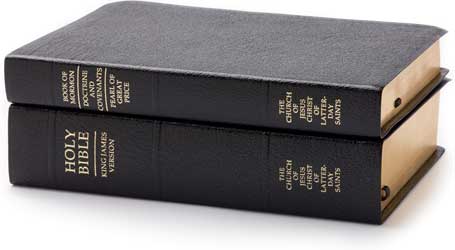 As a result, the center of our family Easter celebration is our participation in the General Conference of the Church of Jesus Christ of Latter-day Saints, and in family scripture reading.. Just as we read the prophesies and accounts of the birth of the Savior at Christmastime, we have established a family tradition of reading the scriptures relating to the last week of the Saviors mortal life, His death, resurrection, and post-mortal ministry, during the weeks before and after Easter. (See the scripture compilation in the following pages.) Many of our other activities are done in conjunction with the scripture reading.
As a result, the center of our family Easter celebration is our participation in the General Conference of the Church of Jesus Christ of Latter-day Saints, and in family scripture reading.. Just as we read the prophesies and accounts of the birth of the Savior at Christmastime, we have established a family tradition of reading the scriptures relating to the last week of the Saviors mortal life, His death, resurrection, and post-mortal ministry, during the weeks before and after Easter. (See the scripture compilation in the following pages.) Many of our other activities are done in conjunction with the scripture reading.
Part of our enjoyment of the Christmas season comes from the preparation and anticipation before Christmas Day. We have a Christmas calendar with daily activities beginning on Dec. 1. Because Easter comes at a different time each year, it can creep up on us before we are aware that it is the Easter season. We find it helpful to mark our calendars at the first of the year to remind ourselves to do Easter planning and begin preparations several weeks before Easter. We have found that with a shift in attention, many of the things we do naturally in the spring can become part of our preparations for Easter.
 As we do our spring yard work and plant new trees, bushes, flowers and vegetables, we watch and talk about the plants returning to life from their winter dormancy.
As we do our spring yard work and plant new trees, bushes, flowers and vegetables, we watch and talk about the plants returning to life from their winter dormancy.
 Spring-cleaning has become focused on getting the house ready for Easter. During a Family Home Evening, we talk about how the Jews prepare for Passover by searching for leavened bread as they clean house, discarding it as a symbol of casting sin out of their lives.
Spring-cleaning has become focused on getting the house ready for Easter. During a Family Home Evening, we talk about how the Jews prepare for Passover by searching for leavened bread as they clean house, discarding it as a symbol of casting sin out of their lives.
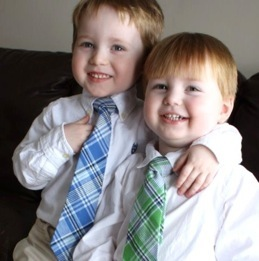 Some of the traditional activities that are associated with Easter may be an enjoyable part of a family Easter celebration when we focus on the symbolism involved. Growing children need new clothes on a regular basis, and spring is a natural time to buy clothes for the warm seasons. We try to get any needed church clothes for the upcoming year as part of our Easter celebration, and talk to the children about putting on new clothes on Easter morning as a symbol of putting on new life in the resurrection.
Some of the traditional activities that are associated with Easter may be an enjoyable part of a family Easter celebration when we focus on the symbolism involved. Growing children need new clothes on a regular basis, and spring is a natural time to buy clothes for the warm seasons. We try to get any needed church clothes for the upcoming year as part of our Easter celebration, and talk to the children about putting on new clothes on Easter morning as a symbol of putting on new life in the resurrection.
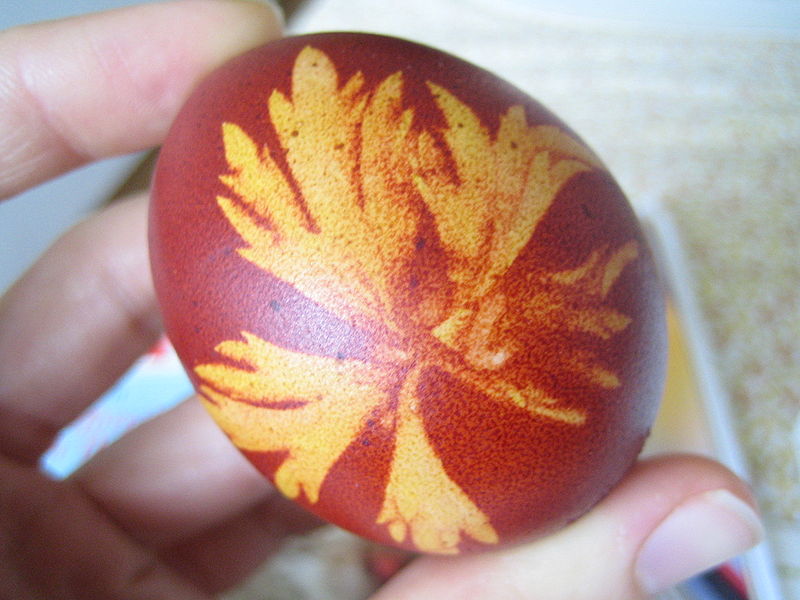 Decorating Easter eggs is fun and appropriate. After the destruction of the temple in Jerusalem when the Jews could no longer sacrifice the Passover lamb, they began using roasted eggs instead of lamb during their Passover meal as the symbol of the sacrifice. We hold our Easter egg hunt on Saturday in anticipation of the Easter celebration the next day.
Decorating Easter eggs is fun and appropriate. After the destruction of the temple in Jerusalem when the Jews could no longer sacrifice the Passover lamb, they began using roasted eggs instead of lamb during their Passover meal as the symbol of the sacrifice. We hold our Easter egg hunt on Saturday in anticipation of the Easter celebration the next day.
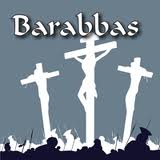 There are many community activities centered around Christmas. There are fewer ready-made activities at Easter. We try to look for appropriate Easter activities that are taking place in our community and participate in them. We especially look for Passion Plays and concerts of Easter music.
There are many community activities centered around Christmas. There are fewer ready-made activities at Easter. We try to look for appropriate Easter activities that are taking place in our community and participate in them. We especially look for Passion Plays and concerts of Easter music.
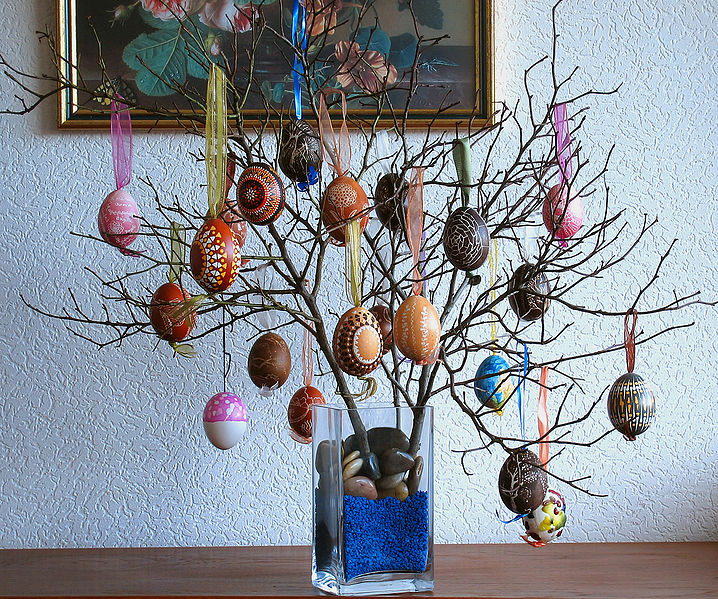 We love the decorations at Christmas. They serve as a constant visual reminder of the meaning of the season. We wanted something that would do the same thing at Easter. Some people put up white lights or put candle lights in their windows at Christmas, and leave them up until Easter. Others decorate small trees with Easter ornaments or put flower wreaths on their doors. In our home, we put up pictures of the Savior we have acquired from the LDS Church Distribution Center (www.ldscatalog.com) and church publications.
We love the decorations at Christmas. They serve as a constant visual reminder of the meaning of the season. We wanted something that would do the same thing at Easter. Some people put up white lights or put candle lights in their windows at Christmas, and leave them up until Easter. Others decorate small trees with Easter ornaments or put flower wreaths on their doors. In our home, we put up pictures of the Savior we have acquired from the LDS Church Distribution Center (www.ldscatalog.com) and church publications. 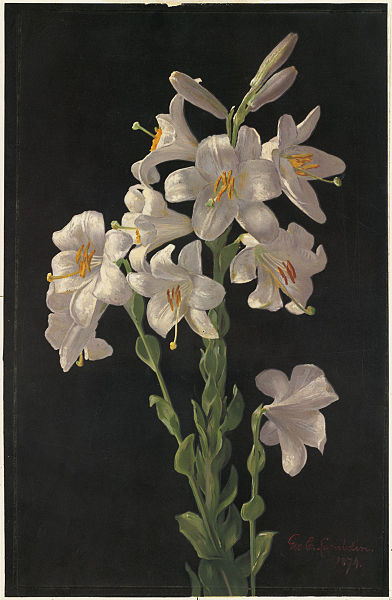 Much of the world’s great art is based on the events of the last week of the Saviors mortal life, His death and resurrection. We also decorate with potted palm trees, Easter lilies and other flowers. We put out a large decorated basket that holds old church publications with Easter articles and stories, books, recordings of Easter music, and Easter videos.
Much of the world’s great art is based on the events of the last week of the Saviors mortal life, His death and resurrection. We also decorate with potted palm trees, Easter lilies and other flowers. We put out a large decorated basket that holds old church publications with Easter articles and stories, books, recordings of Easter music, and Easter videos.
We love Christmas stories, and have traditionally purchased a new Christmas book each year. We are now beginning to purchase books such as the Deseret Book publication, Beholding Salvation, or The Life of Christ in Art by Nancy Grubb for use at Easter time. We also include such books as Believing Christ by Steve Robinson in our Easter book basket.
 Traditional Christmas music helps to make Christmas time special. As we read the Easter scriptures, we enjoy singing appropriate hymns. We have also begun a tradition of buying a new recording of religious or classical music each Easter. Our current favorites are “The Redeemer, a Sacred Service of Music” by Robert Cundick and Mack Willburg’s Requiem. Some of the other recordings appropriate for Easter are listed in the section on Easter Music.
Traditional Christmas music helps to make Christmas time special. As we read the Easter scriptures, we enjoy singing appropriate hymns. We have also begun a tradition of buying a new recording of religious or classical music each Easter. Our current favorites are “The Redeemer, a Sacred Service of Music” by Robert Cundick and Mack Willburg’s Requiem. Some of the other recordings appropriate for Easter are listed in the section on Easter Music.
We also enjoy watching videos with Easter or Passover themes, many of which are available at the LDS Church Distribution Center. For suggestions on some appropriate videos, see the section on Easter Videos, and look at the resources at biblevideos.org.
 Special foods can be an important part of celebrations. As we read the scriptures of the Passion week, we use the foods that are mentioned in the scriptures. For instance, we eat figs the second day of the week as we read of the barren fig tree.
Special foods can be an important part of celebrations. As we read the scriptures of the Passion week, we use the foods that are mentioned in the scriptures. For instance, we eat figs the second day of the week as we read of the barren fig tree.
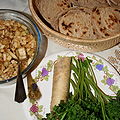 On the fifth day of the week we hold a family Passover Remembrance Dinner. We read the account in Exodus 12: 1-42 of the first Passover, Psalm 113, Psalm 116 and Psalm 117 and then the New Testament scriptures relating to the Last Supper as we eat the traditional foods included in the feast of the unleavened bread. Menus and recipes are included in the section on Easter Feasts.
On the fifth day of the week we hold a family Passover Remembrance Dinner. We read the account in Exodus 12: 1-42 of the first Passover, Psalm 113, Psalm 116 and Psalm 117 and then the New Testament scriptures relating to the Last Supper as we eat the traditional foods included in the feast of the unleavened bread. Menus and recipes are included in the section on Easter Feasts.
On Easter morning, we read the scriptures about the resurrection at a family sunrise service. Fish and honeycomb, representing the foods the Savior shared with His disciples after his resurrection, make an appropriate part of an Easter dinner.
Another excellent activity for Easter Day would be to read or watch Brad Wilcox’s talk, “His Grace is Sufficient,” available at http://speeches.byu.edu/?act=viewitem&id=1966 or http://www.youtube.com/watch?v=yLXr9it_pbY.
These traditions have created some treasured memories in our family. They help us to prepare our spirits for Easter and focus our minds on the sacrifice our Savior made in our behalf.


